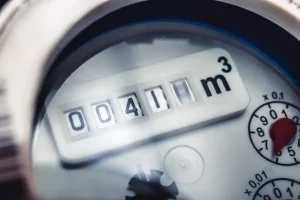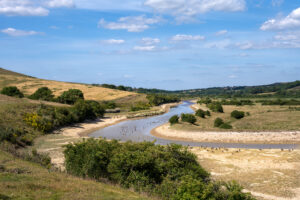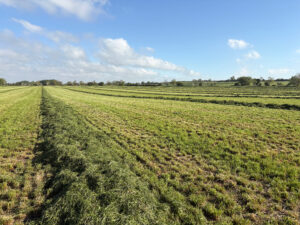Recognising who is responsible for your water meter and knowing how to read it is essential to ensure you only pay for the water that you use. Your water meter can help you establish what your usual water consumption rate is, estimate your bills accurately and spot any leaks early on. By regularly checking your meter readings, you can also assess your business water efficiency measures to help reach sustainability goals. But whose responsibility is it to maintain the water meter and take meter readings?
Who owns my water meter?
Your water meter is owned by the Wholesaler, which differs from the market arrangements used for electricity or gas suppliers. Wholesalers are the companies responsible for the water infrastructure, which includes the pipe networks that supply water up to your premises.
Only the Wholesaler or specialist accredited contractors are permitted to replace or maintain the meter or any parts of the public water network. You are only responsible for the water supply and pipework from the meter into your premises.
Who is the Wholesaler?
The water Wholesaler purchases large quantities directly from manufacturers or producers and then acts as an intermediary to water retailers such as Castle Water, who then retail the water supply to your business. You might hear of the Wholesaler being referred to as your water supplier. Examples of some of the main water suppliers in the UK include Severn Trent, Thames Water and Affinity Water, and a full list of the main Wholesalers in the UK can be found here.
Who can I talk to about the location of my water meter?
The Wholesaler has an obligation to ensure that your meter is in a location where readings can be taken safely. Where the meter is in an unsafe location, Castle Water can make a request to the Wholesaler to relocate the meter. Examples of an unsafe location would include a meter being located by a busy road, or next to a sheer drop.
If you’re unsure of where your meter is located, you can visit your online portal account, and select Meters > View My Meters on the left hand side menu. Simply select your meter and scroll down to view the “Location description” where you will find a concise description as to where your meter can be found.
If you are still unable to locate your meter, you can request that a member of our metering team attends your property to assess its location. They will then update your portal account so that the information is available to the next person that needs to take a meter reading.
Who can take a meter reading?
Both your retailer and Wholesaler can take meter readings and enter them into the central market operating system (CMOS). Meter readings are recorded centrally so that Wholesale charges can be calculated accurately and your water usage is available to other retailers if you decide to switch.
As a customer, you are also able to take meter readings and it is recommended that you submit them to your retailer on a monthly basis to ensure you are only paying for the water you use. If you are a Castle Water customer, you can submit your meter readings through the online portal.
How often should I take meter readings?
As a water retailer, we try to take a meter reading for you once every two years, but you can request a meter reading at any time which may be chargeable. We would recommend submitting a meter reading every month to keep your bills up to date and to spot any inconsistencies in water consumption as early as possible.
Unfortunately, this isn’t always possible. For example, your meter may be located inside your property and you have access restrictions, or the meter may be located in an unsafe location. If we have not been able to take a meter reading, you can send us your own meter reading which we will use in calculating your bill.
If we have not been able to take a meter reading and you haven’t provided a reading, your water charges will be based on an estimation of the typical water usage for a property of your size, at your location and in your industry.
How do I read my meter?
Step 1: Locate your meter. If you are unsure of the location of your meter, you can find this in your online portal account.
Step 2: If your meter is safe to access, make a note of the number on the meter. We only require the black digits to be recorded, so you do not need to include any numbers in red.
Step 3: Submit your meter reading in the online customer portal.
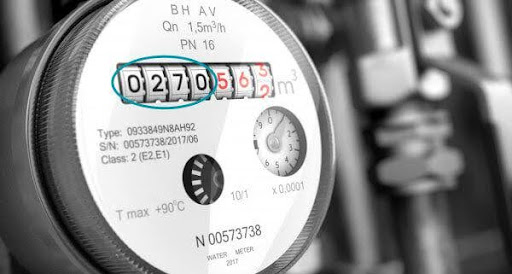
Read our full page on how to take a water meter reading.
What is Automatic Meter Reading (AMR)?
Automatic Meter Reading (AMR) is an alternative to traditional manual meter reading. AMR is a remote reading device that attaches to your existing water meter. It regularly submits accurate water meter readings directly to your water retailer, keeping your bills up-to-date and removing the task of manual readings and can be installed by the Wholesaler, the retailer or the customer. The party that owns the AMR is responsible for its maintenance. Installing AMR equipment is straightforward and does not require any interruption to the water supply.
AMR is a great option if you’re looking to improve water efficiency. It can also help to identify leaks, so you can act fast to minimise damage, costs, and downtime. You can view and track all the collected data in user friendly charts and graphs by logging in to your AMR portal.
The way AMR works is through radio frequency and can be done on foot or via vehicle. The device is carried by one of our meter readers or placed inside of a vehicle and then receives the data from the meter when it passes by the location of the meter. With this method, our meter readers no longer need to physically see the meter. This can therefore be a great option for customers that have difficulty accessing their meter regularly.
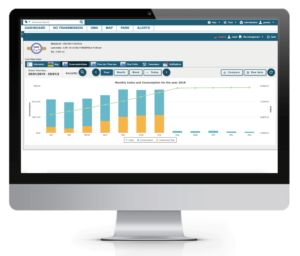
Who is responsible for repairing and maintaining my meter?
Under the Codes (in Section 4 of the Business Terms) which govern the water market, the Wholesaler is responsible for the maintenance and repair of the meter, and for recording the relevant information to ensure you are charged correctly. This includes the meter number, its size and its location.
If you identify a problem with the meter itself, you should notify your retailer, who will contact the Wholesaler to inspect the meter on your behalf. If the Wholesaler carries out a visit to inspect your meter and there is no fault found, you may be liable for charges to attend the property. Castle Water customers can report suspected faults with their meter on the portal.
If the meter pit is on public land, and it is seriously obstructed, you can contact your retailer to ask the Wholesaler to either move the obstruction or move the meter if they agree that the meter is seriously obstructed. An obstruction that would fall under the criteria would be a meter being covered by a re-laid pavement.
There are Service Level Agreements (SLAs) in the Codes governing the time allowed to a Wholesaler to carry out inspections, tests and repairs which is typically 20 business days. However, the SLAs are not always met, and your retailer does not have any specific enforcement role in this regard. Any queries regarding this should be put forward directly to your Wholesaler.
Your water retailer may be able to assist with some basic maintenance work to access the meter such as:
- The meter pit lid being stuck
- Water being located in the meter pit
- There is something obscuring the glass
- There is a minor obstacle obstructing access to the meter (e.g. a build-up of dirt)
It’s important to note that your water retailer will add a charge to your water bill if they need to perform maintenance work to access your meter.
Tips from Castle Water’s metering team
MOSL recently named Castle Water’s Metering team as the highest performing in the UK. Here are some of their top tips to make metering easy:
- If there is water in the meter pit, it isn’t normally a sign of a leak. You can pump out water with a hand-operated pump – alternatively a bicycle pump will normally do the trick if you don’t have a hand-operated pump.
- You don’t need to get up close to read the meter – just hold your phone over the top of the pit and take a photo, from here you can zoom in to see the numbers.
- If there is some mist or dirt on top of the glass, tie a sponge to a pole (or broom handle) and gently wipe it.
- If the meter pit cover seems stuck, you can normally free it with a screwdriver or small pry bar.
- You’ll spot leaks quicker if you read your meter often. We would recommend taking a minimum of one meter reading per month.

